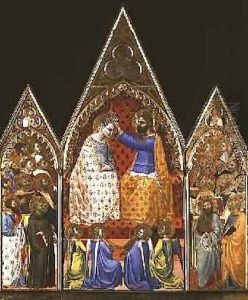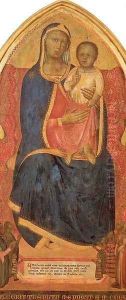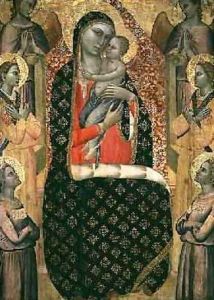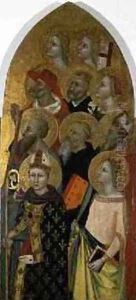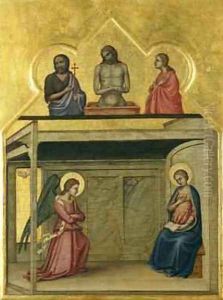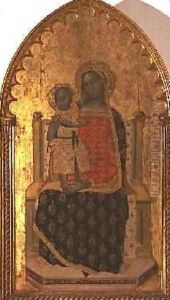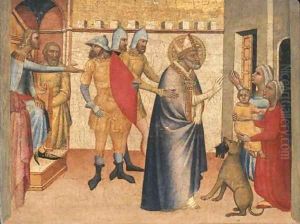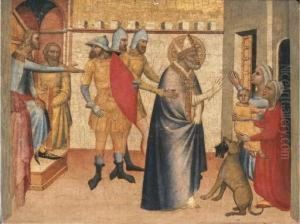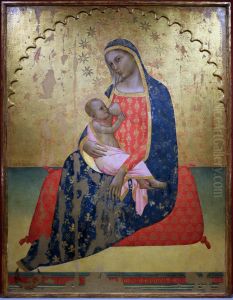Allegretto Nuzi Paintings
Allegretto Nuzi was an Italian painter active during the 14th century, a period that witnessed significant developments in art due to the influences of both the Byzantine tradition and the nascent Renaissance. Born in Fabriano, a small town in the Marche region of Italy, around 1315, Nuzi is often associated with the Italian Gothic style, which was characterized by elegance, an emphasis on linearity, and rich decoration.
Nuzi's career as a painter began to take shape within the context of the Fabriano school. Although there is limited documentation about his early training, it is believed that he might have been influenced by artists such as Giotto and his school, who were leading the shift towards more naturalistic representation in art. In 1346, Nuzi is recorded as being in Florence, which was a major center of art and culture at the time. His stay in Florence had a significant impact on his style, as he absorbed elements of the Florentine approach to painting.
By the time he returned to Fabriano, Nuzi had developed a distinctive style that fused local traditions with the innovative techniques he learned in Florence. He was known for his meticulous attention to detail and his ability to create a sense of depth and volume within his figures. His work is often characterized by the use of vibrant colors and the inclusion of elaborate backgrounds filled with intricate patterns and designs.
Throughout his career, Nuzi undertook various commissions for religious institutions. He produced altarpieces, frescoes, and other devotional paintings. One of his notable works is the altarpiece for the Church of San Niccolò in Fabriano, which displays his skill in handling complex compositions and his flair for color and ornamentation.
Nuzi's contribution to the art of his time lies in his ability to combine traditional Gothic elements with the emerging Renaissance style, thus bridging two important periods in the history of art. His legacy is also tied to the Fabriano school, which played a significant role in the spread of Renaissance ideas throughout Italy.
Allegretto Nuzi passed away in 1373, but his work continued to influence artists in the Marche and beyond. Today, his paintings can be found in various museums and collections, where they are studied for their historical importance and artistic merit.
